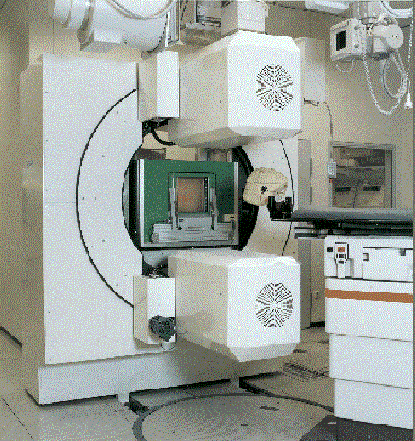| The Redesign of the Positron Camera BASTEI for In-Beam PET Monitoring of Patients Treated with Carbon Ions in a Sitting Position B,E,G | |||
|---|---|---|---|
| W. Enghardt, F. Pönisch, M. Sobiella, P. Crespo1, D. Schardt1 | |||
|
The heavy ion therapy facility at GSI is only capable of delivering a fixed
horizontal beam,
where the patients have been treated in supine position up to now. This reduces the
flexibility in treatment planning for the most frequently treated skull
base tumours [1] as a recent analysis of the treatment geometry of such tumours
revealed: The heavy ion beam portals giving an optimum dose conformation to the target
are found to have an inclination of about 10 to 45 deg with respect to the frontal plane
of the patient in supine treatment position [2].
A maximum flexibility for choosing the beam
portals as it is usual at medical electron linear accelerators for photon and electron
therapy would be achieved with a rotating beam delivery (gantry) [3]. Since such a
solution is not feasible at the GSI experimental heavy ion therapy unit, a chair for
irradiating patients in a sitting position will be mounted at the therapy site in 2001.

Fig. 1 The new PET gantry in treatment position. (Photo: A. Zschau, GSI Darmstadt)
The gantry reconstruction has been coordinated
by Dr.-Ing. Haderthauer, nukmed konstruktion, Tülau-Fahrenhorst, mechanical
engineering was carried out by Bernd Flach, Maschinenbau & Kunststoffverarbeitung,
Schönheide under the technical leadership of K. Spitzner, and the control system based
on the SPS process control units of SIEMENS including the position
readout via network by the PET workstation has been developed by Automatisierungstechnik
Egbert Neuschulz GmbH, Salzwedel. The reliability of the new gantry was demonstrated
during the therapy of Nov./Dec. 2000, when 535 PET scans have
been performed.
References
|